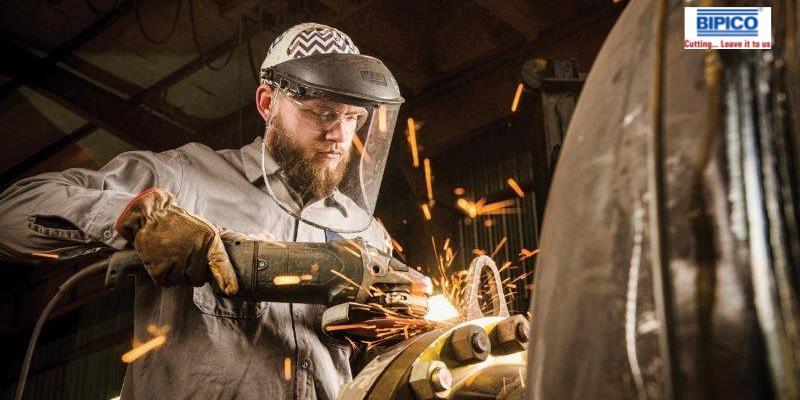Benefits of using cutting and grinding abrasives safely
Abrasive metal cutting using abrasives is a precision metal cutting technique that is frequently misinterpreted. Because of the method's name, some prospective users might infer that it creates surface flaws like burrs, sharp edges, and other faults.
Those presumptions couldn't be more incorrect. Abrasive cutting actually works well for applications that call for precise cutting, close tolerances, and great volume at a reasonable cost.
But it's crucial to comprehend the benefits and drawbacks of the technique before deciding on abrasive cutting—or any other precision metal cutting method you may be considering—for your 2-axis metal component cutoff. In this manner, you can assess the strategy and determine whether it will satisfy your goals and priorities.
What makes abrasive cutting different?
The manner in which material is removed from the workpiece distinguishes abrasive cutoff from several other, more well-known precision cutting techniques.
1. Abrasive cutting eliminates material by grinding and eroding it rather than by cutting with saw teeth.
2. This is done by employing a very thin, non-reinforced abrasive cutting wheel made of numerous, sub-micron cutting particles embedded in a bonding substance.
3. These abrasive wheels are self-dressing, in contrast to many cutting tools that become less effective with each usage.
In other words, when the wheel removes the material, the minuscule, sharp abrasive particles are worn away, always exposing new ones and continuously offering a new cutting edge.
The metal being cut does not overload the wheel as diamond wheels do. Burrs are forced through the kerf and ejected since the kerf is tiny — 0.012" to 0.020" (0.3 mm to 0.5 mm).
Cutting and grinding safety
Like any other skill, safety requires repetition and practice. The objective is to make safety a priority for operators and ingrain it into the culture of the business. Accidents can occur at any time, but encouraging everyone to prioritize safety helps reduce the dangers.
Abrasives can also be used safely and effectively to maximize performance and efficiency, just like any other tool.
Companies and operators can learn the fundamentals of safe and effective product use by speaking with an abrasives producer about training.
Effects of safety on abrasive cutting quality
With the use of safe and efficient products, these problems can be greatly eliminated.
By doing so, operations can avoid having to modify or repair the base material in secondary or sometimes even third phases, which ultimately cuts down on labor costs and boosts productivity.
This is particularly crucial as more facilities operate under tighter tolerances and condensed time frames because there is less room to repair any kind of material or part damage.
When grinding, one suggestion is to always enter the workpiece on a pull stroke rather than a push stroke to lessen the chance of damaging the base material.
Push strokes have a higher chance of gouging the workpiece, but pulling strokes can be started at a much lower angle and with less force, resulting in a smoother and more reliable stroke.
Advantages of abrasive cutting and grinding
By enabling the use of mandrels, which support the tubes for precise cutoff, so-called thin-wheel abrasive cutting excels at cutting tubes in addition to cutting rods and extrusions.
Dielectric materials can also be sliced with abrasive cutting equipment. That implies that coated metals and composite materials can be cut without any issues or restrictions.
Compared to laser and EDM for precise metal cutting, abrasive cutoff operates at substantially faster rates.
As diameters are smaller and there are more pieces inside a bundle, the ability to bundle material becomes an incredibly efficient advantage.
As a result, the approach can reduce costs for requirements requiring big volumes.
Why should you use abrasive cutting techniques and tools?
1. It is easy to cut or slice hardened steel.
2. Smooth finishes are possible with it.
3. Less time is required.
4. In every situation, it can retain precision.
5. There is hardly any pressure needed.
6. High-grade alloy steels can be cut with these grinding machines.
7. Increased productivity when grinding.
Summary:
It's crucial to use abrasive equipment according to their instructions for a number of reasons. In the first place, it can aid in preventing injuries to the operator and other nearby workers.
Additionally, focusing on safety can assist operations in lowering costs by reducing downtime due to accidents or rework related to worker's compensation, turnover, and training of new operators. Businesses can increase production by minimizing downtime.






Comments
Post a Comment